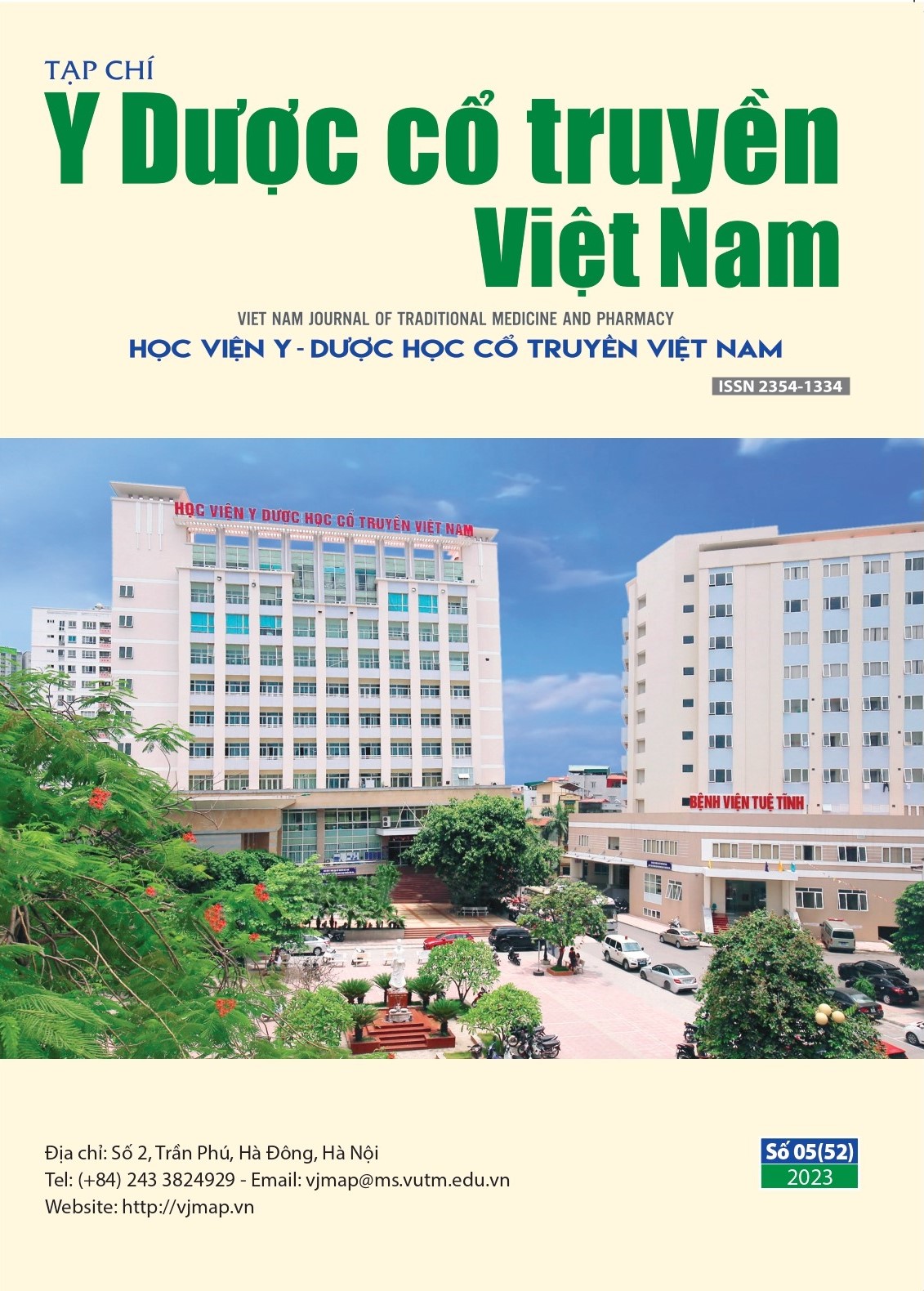Nghiên cứu tác dụng bảo vệ gan của Cao lỏng giải độc gan trên chuột nhắt trắng
Main Article Content
Abstract
Objectives: To assess the hepatoprotective effects of the Liver detoxifier liquid extracts (including Moringa oleifera, Phyllanthus amarus and Solanum hainanense) with a continuous oral dose of 8 days in mice with a model of acute poisoning with paracetamol.
Subjects and methods: The Liver detoxifier liquid extract was administered orally to white mice at 2 doses of 8.1g and 24.3g/kg/day for 8 consecutive days. Causing liver toxicity by giving each mouse 400mg/kg of paracetamol. The trial was conducted in parallel with 3 control groups including the one that did not cause liver toxicity, the other that caused liver toxicity but did not use the drug and the group that caused liver toxicity and were given silymarrin at a dose of 140mg/kg. After 48 hours of hepatotoxicity, mice’s carotid blood was taken to quantify AST, ALT, GGT, albumin and total bilirubin. Mice were dissected and removed their livers to determine the weights and observe the macroscopic view. Randomized microscopy of 30% of mice’s livers in each lot was evaluated histopathological lesions by scoring as prescribed. This study was carried out between April and June 2023 at Hanoi Medical University.
Results: The Liver detoxifier liquid extract has good effects of reducing AST, ALT, GGT concentrations, increasing albumin concentration, decreasing bilirubin levels and reduced mice’s hepatocellular injuries. This liquid extract tended to have a better hepatoprotective effect than silymarin at a dose of 140 mg/kg.
Conclusions: With oral doses of 8.1g and 24.3g of medicinal herbs/kg/day × 8 consecutive days, the liquid extract has high effects on protecting the liver cells of white mice poisoned by paracetamol.
Article Details
Keywords
Liver detoxifier liquid extract, AST, ALT, GGT, albumin, total bilirubin, macroscopic observations, microscopic morphology.
References
2. Trương Thị Thu Hiền, Hoàng Anh Tuấn, Ngô Thị Tuyết Mai, Hoàng Đắc Thăng, Hà Văn Quang. Đánh giá tác dụng bảo vệ gan của câu cà gai leo (Solanum procumbens Lour.) trên mô hình gây tổn thương gan bằng paracetamol ở chuột nhắt trắng. Tạp chí Y Dược học Quân sự, 2018, số 6, tr.14-21.
3. Phí Thị Cẩm Miện, Trần Văn Thái, Đồng Huy Giới, Bùi Thị Thu Hương, Đỗ Thị Thảo. Đánh giá tác dụng bảo vệ gan của dịch chiết chùm ngây (Moringa oleifera) trên chuột gây tổn thương gan bằng carbon tetrachloride (CCl4). Tạp chí Khoa học Nông nghiệp Việt Nam, 2017, tập 15, số 2, tr. 225-233.
4. Nguyễn Thị Tố Nga, Đỗ Thị Tuyên, Đoàn Văn Việt, Nguyễn Thị Ngọc Dao. Tác dụng bảo vệ gan và chống oxy hoá của hoạt chất silymarin được tách chiết từ cây cúc gai Silybum marianum (L.) Gaertn. Tạp chí sinh học, 2006, 28(3), tr. 88-92.
5. Viện Dược liệu. Phương pháp nghiên cứu tác dụng dược lý của thuốc từ thảo dược. Nhà xuất bản khoa học và kỹ thuật, 2006, Hà Nội.
6. Mohamad, N. E., Yeap, S. K., Beh, B. K., et al. Coconut water vinegar ameliorates recovery of acetaminophen induced liver damage in mice. BMC complementary and alternative medicine, 2018, 18(1), pp.195, https://doi.org/10.1186/s12906-018-2199-4.
7. Muhammad - Azam, F. Nur-Fazila, S. H. Ain-Fatin et al. Histopathological changes of acetaminophen-induced liver injury and subsequent liver regeneration in BALB/C and ICR mice. Veterinary world, 2019, 12(11), pp.1682-1688.

